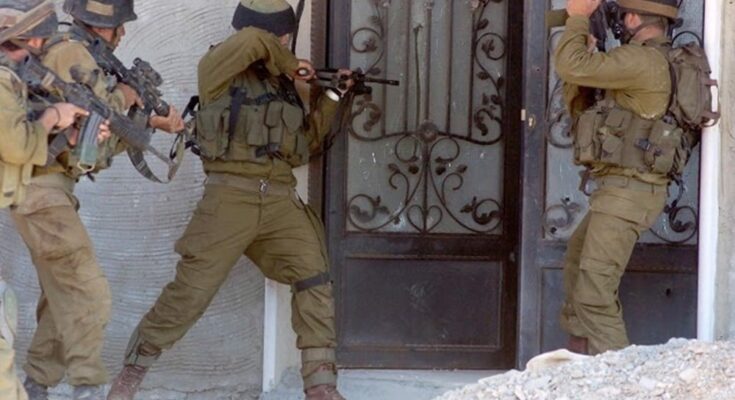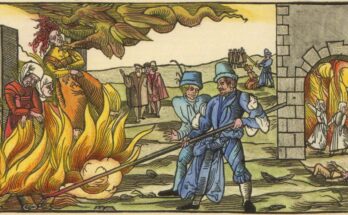
The Israel-Lebanon conflict is not new, and, in fact, six Israeli incursions into the neighboring country have taken place since 1978.
However, the true conflict is not between the two states. It is actually between Israel and militant groups that have controll1ed south Lebanon since the early 1970s, namely the Palestinian Liberation Organization (PLO) and, later, Hezbollah from the mid 1980s until the present time.
The recent invasion of Israeli armed forces in Lebanese territory is the sixth since 1978. This time, the aim is to eliminate Hezbollah, a Shiite Muslim political party and armed group that wields significant power in Lebanon.
After the declaration of independence of the State of Israel on May 14, 1948, the Arab-Israeli war erupted. It was a war between the newly-found Israeli state and the Arab League, a coalition of Arab states which, at the time, was comprised of Egypt, Iraq, Transjordan, Saudi Arabia, Syria, North Yemen, and Lebanon.
Lebanon, however, had a very small share of military forces involved, participating only in a single battle. While Israel had already invaded Lebanon and captured a small territory, in October 1948, Israeli forces withdrew. Since then, unlike in other Arab states, the Jewish population of Lebanon began growing, mostly due to the large Christian population in the country.
The two neighbors enjoyed a period of good relations, with good diplomatic rapport and flights linking East Jerusalem with Beirut.
Black September puts end to Israel – Lebanon relations
In September 1970, Jordan expelled the Palestinian Liberation Organization (PLO) from its territory, a move that was called “Black September.” The militant group moved its base to south Lebanon. From there, it started launching rocket attacks against the northern border of Israel.
The Lebanese government in Beirut was unable to extend its authority to the south. When the Lebanese Civil War began in 1975, the area remained lawless. PLO took the opportunity to escalate its rocket attacks against Israel and invade into Israeli territory.
On March 14, 1978, Israel responded to a PLO operatives attack in Tel Aviv which left 38 Israeiis dead and 70 wounded. Operation Litani included an invasion of southern Lebanon aiming at eliminating PLO militants from areas south of the Litani River.
In response to the escalation in south Lebanon, on March 19, 1978 the UN established a peacekeeping force, the United Nations Interim Force in Lebanon (UNIFIL), in the area south of the Litani River. UNIFIL was mandated to confirm the withdrawal of Israeli forces from Lebanon, restore international peace and security, and assist the Lebanese government in establishing effective authority in the area.
Israel was expected to withdraw its forces from the area and hand over authority to UNIFIL. However, the Israeli Defense Forces (IDF) reneged on the final stage of the agreement, establishing instead what it called a “zone of security” and awarding authority of it to a local Christian militia, the South Lebanon Army, whom they supported as a buffer to Islamist PLO.
Israeli incursions into Lebanon in 1982
Unifil failed to control the Palestinina militant groups in south Lebanon that continued to launch attacks against Israel. In June 1982, Israel reinvaded Lebanon in Operation Peace for Galilee. This time the army marched as far as Beirut and remained there until September 29, 1982, when the PLO had officially withdrawn from Beirut and moved to Tunisia.
Israel continued to occupy most of south Lebanon until September 3, 1983, when it retreated to south of the Awali river in south Lebanon because of rising IDF casualties from guerrilla attacks by militants. In 1985, Israel further retreated back to the zone of security, which it continued to maintain.
The political vacuum left by the PLO in south Lebanon was swiftly filled by two competing Islamist militant groups in 1984. Hezbollah in the Beqaa Valley that began to infiltrate the south, competing with rival group Amal for popular Shia support. In 1986 the two groups went to war against each other for control of south Lebanon. Hezbollah was supported by Iran and Amal by Syria. The War of Brothers, as it was called, ended in 1989.
End of the Lebanese Civil War
In 1990, the Taif Accord brought an end to the wider Lebanese Civil War after 25 years. The power-sharing agreement paved the way for the departure of Syrian and Israeli forces. Most militias disbanded, and the Lebanese Armed Forces (LAF) began to be rebuilt after they were split due to sectarian tensions.
Still, the government in Beirut remained unable to exercise authority in the south due to a lack of resources and political consensus, once again leaving the area a lawless land.
Between 1990 and 2000, Israel launched two further military operations in south Lebanon: Operation Accountability in 1993 and Operation Grapes of Wrath in 1996. The IDF still occupied the zone of security in Lebanon, and both these military operations were launched to support Israel’s wider goal, which was to rid the area south of the Litani River of Hezbollah.
However, the two incursions resulted in significant damage to Lebanese infrastructure and led to the displacement of civilians civilian displacement. More importantly, the 1996 shelling by the Israeli Air Force of the UN Fijian compound at Qana, 12 miles north of the border, resulted in the death of 106 civilians.
The two operations failed to eliminate Hezbollah and, in the late 1990s, the group increased its attacks on the IDF and the pro-Israel militia, the South Lebanese Army. Using improvised explosive devices disguised as rocks, as well as snipers and assaults on military compounds, they managed to erode IDF morale. The loss of Israeli lives made the occupation highly unpopular in Israel.
Hezbollah rules south Lebanon
On May 25, 2000, the IDF was forced to withdraw from south Lebanon, and, in June, the United Nations established the “blue line,” a line that divided Lebanon from Israel and the Golan Heights. The sole purpose was to confirm the withdrawal of the IDF from Lebanese territory. However, Hezbollah took advantage of the Israeli army withdrawal and took complete control of south Lebanon as the de facto political and military authority.
Hezbollah was also backed by Syria, which dominated politics and security in Lebanon and retained around 15,000 troops in the country. The Syrian troops remained in Lebanon until 2005 when they withdrew after massive public demonstrations triggered by the assassination of then Lebanese Prime Minister Rafik Hariri.
Meanwhile, claiming that Israel continued to have armed forces in small sections of the internationally recognized Lebanese land, Hezbollah continued to attack Israeli targets.
Hezbollah and Israel go to war
On July 12 2006, Hezbollah operatives ambushed an IDF patrol south of the blue line, killing three soldiers and kidnapping two. A failing IDF operation to rescue the hostages raised the number of deaths of Israeli soldiers to five. In retaliation, Israel launched an attack in south Lebanon which included air strikes and artillery fire on Lebanese civilian infrastructure and an air and naval blockade, followed by a ground invasion of south Lebanon.
In response, Hezbollah launched rockets into northern Israel and engaged the IDF in guerrilla warfare. It is estimated that up to 1,300 Lebanese people and 61 Israelis were killed. The invasion severely damaged Lebanese civil infrastructure and displaced approximately one million Lebanese in the south as well as 300,000 to 500,000 Israelis from northern Israel.
The war lasted 33 days and ended on August 14th with a UN intervention that implemented a mandate, which all the parties agreed to abide by.
Since 2006, dialogue between Lebanon and Israel is communicated through UNIFIL. UNIFIL has been mandated with “assisting the LAF in taking steps towards the establishment between the blue line and the Litani River of an area free of any armed personnel, assets and weapons other than those of the government of Lebanon and of UNIFIL deployed in this area.”
Currently, the UNIFIL area of operation stretches from the blue line north to the Litani River and east to the foothills of Golan Heights. Despite regular UNIFIL and LAF patrols, Hezbollah is believed to have retained a military presence south of the Litani.
UNIFIL continues to monitor and observe the area but lacks connections to local communities. The south Lebanon population has been intimidated and oppressed by the multiple various armed groups and militaries.
In the latest Israeli incursion into Lebanon, the IDF and intelligence sources managed to kill Hezbollah leader Hassan Nasrallah and numerous operatives of the militant organization. In response, Iran launched a missile attack against Israel, generating fear of a full-scale war in the Middle East.



